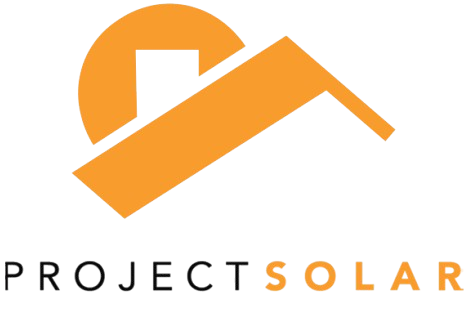What Do Solar Panels Cost, Are They Worth It?
Consider solar panels if you have a high utility bill, get lots of sun and qualify for tax breaks or other savings.
Some or all of the mortgage lenders featured on our site are advertising partners of NerdWallet, but this does not influence our evaluations, lender star ratings or the order in which lenders are listed on the page. Our opinions are our own. Here is a list of our partners.
The average cost of installing an average-size home solar system in 2025 is $29,360 before federal tax credits and incentives . The federal solar tax credit may reduce the net cost to $20,552, and local incentives can further lower the cost.
You can determine whether solar panels are worth it for your home by considering various factors, such as local incentives and policies, your electric bill, and how you finance the system.
Solar panel costs by state
The cost of installing residential solar systems has dropped by nearly $15,000 over the past two decades, according to the Solar Energy Industries Association . That change has made solar more accessible for many more homeowners.
However, costs vary among states. Here are the average costs for installing residential solar panels by state according to EnergySage data.
See solar panel costs by state
| State | Average solar system cost after incentives | Average cost per watt |
|---|---|---|
| Alabama | $30,427. | $3.12. |
| Arizona | $18,799. | $2.07. |
| Arkansas | $23,164. | $2.50. |
| California | $14,476. | $2.30. |
| Colorado | $20,321. | $2.82. |
| Connecticut | $21,781. | $2.77. |
| Delaware | $21,347. | $2.41. |
| Florida | $21,092. | $2.11. |
| Georgia | $22,787. | $2.57. |
| Hawaii | $20,138. | $3.39. |
| Idaho | $22,334. | $2.53. |
| Illinois | $24,666. | $2.99. |
| Indiana | $27,504. | $3.18. |
| Iowa | $27,927. | $3.16. |
| Kansas | $25,732. | $3.08. |
| Kentucky | $27,372. | $2.72. |
| Louisiana | $20,813. | $2.44. |
| Maine | $24,385. | $3.02. |
| Maryland | $25,665. | $2.69. |
| Massachusetts | $23,107. | $3.19. |
| Michigan | $22,476. | $3.12. |
| Minnesota | $25,038. | $2.94. |
| Mississippi | $22,261. | $2.79. |
| Missouri | $25,265. | $2.82. |
| Montana | $22,787. | $2.61. |
| Nebraska | $21,266. | $2.24. |
| New Hampshire | $22,468. | $3.16. |
| New Jersey | $22,728. | $2.56. |
| New Mexico | $18,594. | $2.86. |
| Nevada | $18,939. | $2.17. |
| New York | $23,279. | $2.83. |
| North Carolina | $21,298. | $2.30. |
| Ohio | $23,024. | $2.58. |
| Oklahoma | $23,245. | $2.33. |
| Oregon | $20,992. | $2.64. |
| Pennsylvania | $23,422. | $2.71. |
| Rhode Island | $22,135. | $3.26. |
| South Carolina | $22,495. | $2.52. |
| Tennessee | $27,325. | $3.34. |
| Texas | $20,308. | $2.06. |
| Utah | $21,020. | $2.61. |
| Vermont | $21,460. | $2.89. |
| Virginia | $26,126. | $2.85. |
| Washington | $22,646. | $2.58. |
| Washington, D.C. | $19,921. | $2.90. |
| West Virginia | $31,636. | $3.10. |
| Wisconsin | $24,133. | $3.00. |
| Wyoming | $27,919. | $3.54. |
| Source: EnergySage, a solar and home energy product comparison marketplace. Data is from February 28, 2025. | #colspan | #colspan |
Note: EnergySage does not have data for AK, ND or SD.
Five factors that affect solar panel cost
Tap to see a summary of the section below
The more efficient the solar panel and the higher the output capacity, the more expensive it’ll be — and some brands are just pricey compared to others. You’ll pay more upfront for a larger system but might save more in the long run on your electricity bill. Adding extra hardware such as batteries for storage will increase the cost of a new system, and each installation company has its own pricing structure for how much they charge for installation and such. (That’s why it’s good to get several quotes to compare them.) And if you choose to take out a solar loan instead of paying cash, you’ll pay more in the end than if you’d paid cash.
1. Panel choice
Several panel characteristics affect panel prices:
- Brand. Solar panel brands vary in quality, warranties and pricing structures, making some brands more expensive than others.
- Output rating. Panels that produce more watts of power in ideal conditions tend to cost more per panel .
- Efficiency. The higher the efficiency, the more powerful the solar panel is for its size.
To understand how output rating and efficiency work together, imagine two 400-watt panels, one that has an efficiency rating of 18% and another that has an efficiency rating of 20%. If working in their ideal conditions, both will produce 400 watts of energy, but the one with the higher efficiency rating is physically smaller. Because space can be tight when loading solar panels on your roof, higher efficiency panels tend to be more expensive.
2. System size
The size of your solar energy system refers to how much solar energy it produces, usually measured in kilowatts. The more kilowatts your system produces, the more it may cost upfront because it either requires more panels, uses more efficient (and more expensive) panels or both. A higher kW system could save you more money over time, though, by producing more energy .
Did you know...
The average home needs around 11 kW of solar energy to cover its electricity consumption; however, homeowners in some states purchase larger systems on average. Your system’s design can also affect the size you need. The shape of your roof, as well as how much direct sun it gets and for how long all factor into how an installer designs your system to maximize solar energy production. If your house requires a more complex or larger system to produce the energy you want, this can affect the total cost.
3. Additional hardware
Installing a system that can store unused energy can increase the cost as well. A good solar battery can cost over $10,000 before federal tax incentives . For example, for a quote that we requested from Tesla, one Tesla Powerwall 3 with installation can run over $16,500.
4. Purchasing method
Paying for solar panels with cash is cheaper than financing the purchase. According to EnergySage, customers who take out a solar loan could pay as much as 47% more than the cash value of a solar system through the life of a loan. How much more you’d pay depends on your loan terms.
5. The installer
Each solar installer has its own way of pricing equipment and installations. Talk with several installers before deciding on which one to use. A more expensive installation doesn’t necessarily mean better quality, though, so be sure to research the companies before agreeing to anything.
Are solar panels worth it?
Here are four important things to consider if you're trying to decide whether solar panels are worth it.
1. Whether you have net metering
To encourage people to install solar panels, many states have adopted net metering, which is a billing method that credits you for the excess solar electricity that you export to the power grid. Essentially, these policies pay you for not using all of the solar energy your system produces . Although net metering is available in many areas, not all states or utilities offer it.
However, some states, including California and Arizona, are transitioning from net metering to net billing, which lowers the price utility companies pay customers for their excess solar energy. If your utility doesn't offer these incentives or pays a low rate for electricity sold back to the grid, solar panels likely won't bring your electricity bill to zero, unless you use a solar battery to store power to use later on.
2. Whether you qualify for tax incentives
The biggest solar incentive for homeowners is the federal solar tax credit, also known as the residential clean energy credit , which provides a credit of up to 30% of the cost of your solar power system .
Depending on your state, you may also have access to rebates, sales and property tax exemptions, waived fees and expedited permits. You can find details on incentives for your state at the Database of State Incentives for Renewables & Efficiency (DSIRE).
3. The size of your current electric bill
Solar panels can generate enough power to significantly lower your monthly electric bill — and if you’re very lucky, even eliminate it. The higher your bill and the more of your electricity use you can offset with your system, the more likely you are to benefit from solar.
You might save more with solar if electricity prices are high where you live. A solar system may provide a good hedge against rising electricity prices, which rose an average of 6.2% from 2022 to 2023, according to the U.S. Energy Information Administration (EIA).
4. Your roof
To help you get the most out of your system, solar installers will inspect your roof, compare that to your electric bills and discuss your future electrification plans. They will also help you evaluate your home’s orientation toward the sun, the amount of sun it gets, and the roof type and condition.
5. The length of your payback period
How long it will take for your solar savings to equal your initial investment varies and depends on several factors, including how much you paid for your system and what tax incentives are available to you. The average payback period ranges from 3.7 to 19.1 years, depending on the homeowner’s state .
NerdWallet writers Lauren Schwahn and Tommy Tindall contributed reporting to this article.
News moves fast. Stay ahead of how it could impact your money.

Frequently Asked Questions
How much will I save on my electric bill with solar?
Your savings will depend on your specific situation. The average homeowner who goes solar can expect to save about $48,000 over 25 years, according to EnergySage.
Where can I find available incentives for my area?
You can search the Database of State Incentives for Renewables & Efficiency (DSIRE) to find incentives available in your state.
Article sources
NerdWallet writers are subject matter authorities who use primary,
trustworthy sources to inform their work, including peer-reviewed
studies, government websites, academic research and interviews with
industry experts. All content is fact-checked for accuracy, timeliness
and relevance. You can learn more about NerdWallet's high
standards for journalism by reading our
editorial guidelines.
- 1. EnergySage. Solar panel cost. Accessed Jan 29, 2025.
- 2. Solar Energy Industries Association. Solar Industry Research Data. Accessed Jul 23, 2024.
- 3. Maryland Energy Administration. A Maryland Consumer's Guide to Solar. Accessed Aug 20, 2024.
- 4. EnergySage.com. Solar & Storage Marketplace Report 2023. Accessed Aug 16, 2024.
- 5. EnergySage.com. Solar battery cost: Why they're not always worth it. Accessed Aug 16, 2024.
- 6. Solar Energy Industries Association. Net Metering. Accessed Aug 16, 2024.
- 7. Internal Revenue Service. Residential Clean Energy Credit. Accessed Aug 16, 2024.
- 8. Office of Energy Efficiency and Renewable Energy. Homeowner's Guide to the Federal Tax Credit for Solar Photovoltaics. Accessed Aug 16, 2024.
- 9. EnergySage.com. Solar payback period: How soon will it pay off?. Accessed Aug 16, 2024.
More like this
Related articles
AD
Save On Solar Without the Middleman
Free Instant Quote
on Project Solar's website

AD

Save On Solar Without the Middleman
- $750 OFF install with NerdWallet;
- SolarCare™: top-tier warranty & 25-year production guarantee;
- No sales commissions mean premium equipment & tech at up to half the price.

Free Instant Quote
on Project Solar's website





